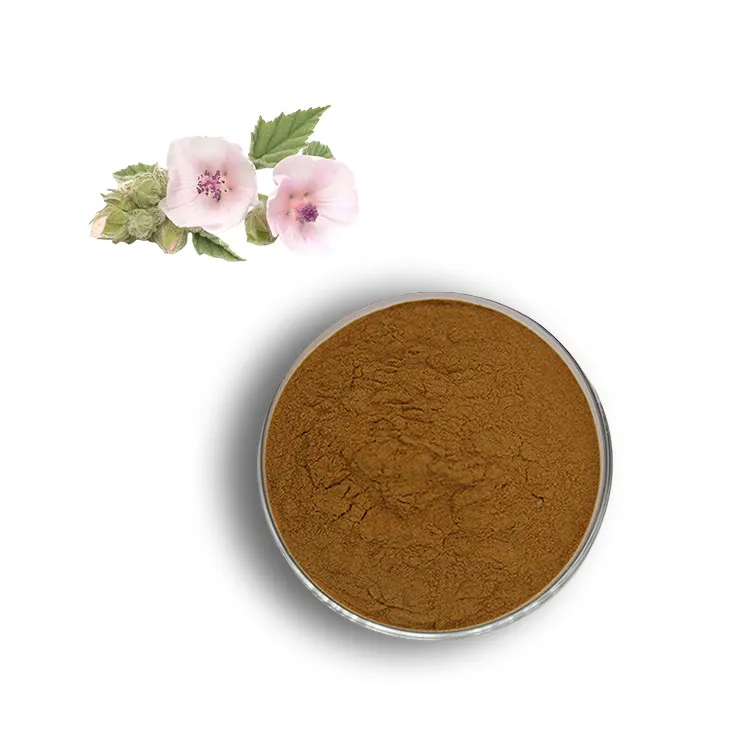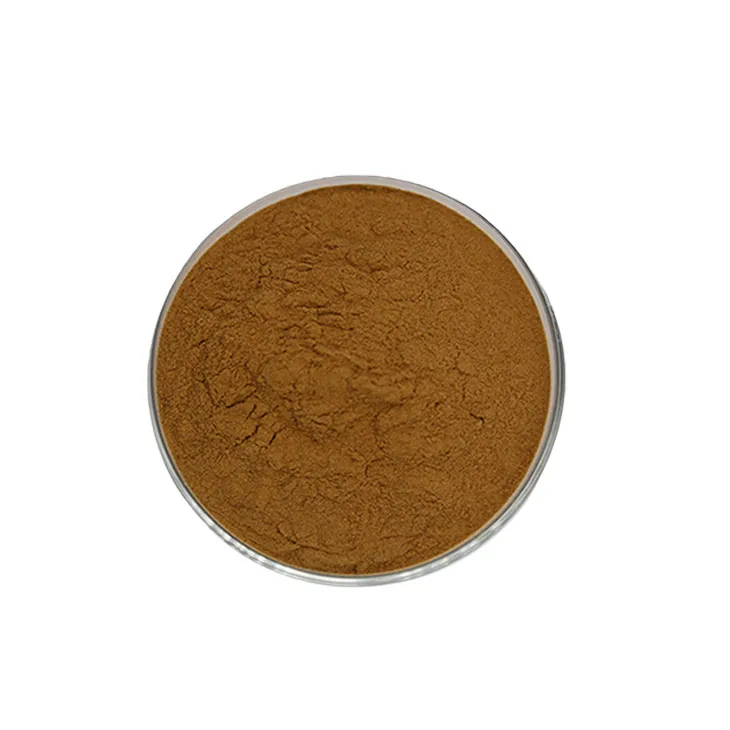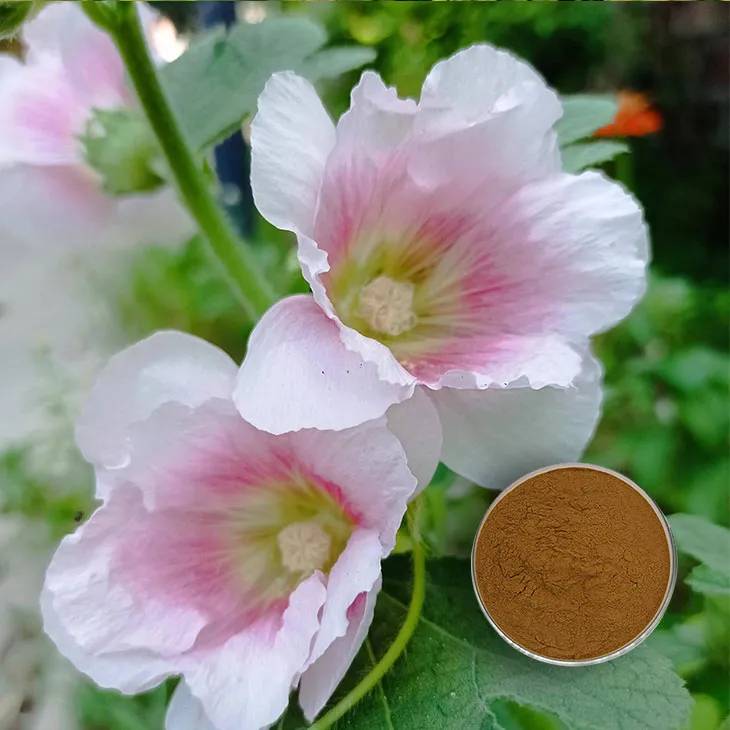- 0086-571-85302990
- sales@greenskybio.com
Types of the Best Medicinal Marshmallow Extract: A Guide to Selecting the Best Medicinal Marshmallow Extract
2024-11-11

Introduction
Medicinal Marshmallow Extract has been used for centuries in traditional medicine for its various health - promoting properties. As the demand for natural remedies continues to grow, it becomes crucial to understand the different types of marshmallow extract available in the market. This guide will explore the factors that contribute to the quality of marshmallow extract, enabling you to make an informed choice when selecting it for medicinal purposes.

1. The Plant: Althaea officinalis
1.1 Origin and Habitat
Althaea officinalis, commonly known as marshmallow, is a perennial herb native to Europe, Western Asia, and North Africa. It thrives in moist, marshy areas, which is where it gets its name. The plant has a long history of use in traditional medicine systems such as Ayurveda and Greco - Roman medicine.
1.2 Parts Used
The roots, leaves, and flowers of the marshmallow plant are all used for medicinal purposes. However, the roots are the most commonly used part for extraction. They are rich in mucilage, a complex carbohydrate that gives the extract its characteristic soothing properties.

2. Extraction Techniques
2.1 Solvent Extraction
Solvent extraction is one of the most common methods used to obtain marshmallow extract. Different solvents can be used, such as water, ethanol, or a combination of both.
- Water extraction: This is a traditional method. Water is used to extract the mucilage and other water - soluble components from the marshmallow roots. The advantage of water extraction is that it is a natural and relatively simple process. However, it may also extract other impurities along with the desired compounds.
- Ethanol extraction: Ethanol is often used as a solvent because it can extract a wider range of compounds compared to water alone. It can dissolve both polar and non - polar substances. Ethanol - based extracts may have a higher concentration of certain active ingredients, but they also require more careful handling due to the flammability of ethanol.
- Combined extraction: Some manufacturers use a combination of water and ethanol for extraction. This method aims to combine the advantages of both solvents, extracting a comprehensive range of compounds while minimizing the extraction of unwanted impurities.
2.2 Maceration
Maceration is a simple and traditional extraction technique. In this process, the marshmallow roots (or other plant parts) are soaked in the solvent (water or ethanol) for a period of time, usually several days to weeks.
- During maceration, the solvent gradually penetrates the plant material, dissolving the active ingredients. The advantage of maceration is that it is a relatively gentle process that does not require complex equipment. However, it can be time - consuming.
- After the maceration period, the liquid is separated from the plant material through filtration. The resulting liquid is then concentrated to obtain the marshmallow extract.
2.3 Soxhlet Extraction
Soxhlet extraction is a more efficient extraction method, especially for extracting compounds that are difficult to dissolve.
- In this technique, the marshmallow plant material is placed in a Soxhlet extractor, and the solvent is continuously recycled through the plant material. This continuous extraction process ensures a more complete extraction of the active ingredients.
- However, Soxhlet extraction requires specialized equipment and may not be suitable for small - scale production. Additionally, the higher temperature and longer extraction time may potentially degrade some of the more heat - sensitive compounds in the marshmallow extract.

3. Chemical Profiles of Marshmallow Extract
3.1 Mucilage
As mentioned earlier, mucilage is a major component of marshmallow extract.
- Mucilage is a polysaccharide that has a gel - like consistency. It is responsible for the soothing and demulcent properties of the extract. When consumed, mucilage forms a protective layer on the mucous membranes of the digestive tract, providing relief from irritation.
- The quality and quantity of mucilage in the extract can vary depending on the extraction method and the quality of the plant material. Water - based extracts tend to have a higher mucilage content, but the purity of the mucilage may be affected by other water - soluble impurities.
3.2 Flavonoids
Flavonoids are another important group of compounds present in marshmallow extract.
- They have antioxidant properties, which help protect the body's cells from oxidative damage. Flavonoids in marshmallow extract may also contribute to its anti - inflammatory effects.
- The type and concentration of flavonoids can vary depending on the origin of the plant and the extraction process. For example, plants grown in different regions may have different flavonoid profiles due to variations in soil composition, climate, and other environmental factors.
3.3 Tannins
Tannins are also found in marshmallow extract.
- Tannins have astringent properties, which can be beneficial for treating certain conditions such as diarrhea. However, high levels of tannins may also cause some side effects, such as interfering with the absorption of certain nutrients.
- The presence and concentration of tannins in the extract need to be carefully considered when selecting a marshmallow extract for medicinal use. Different extraction methods can affect the tannin content, with some methods being more effective at removing or reducing tannins compared to others.
4. Quality Control and Standardization
4.1 Certifications
When choosing a Medicinal Marshmallow Extract, it is important to look for products with relevant certifications.
- Organic certifications: If the marshmallow plant used for extraction is organically grown, it is less likely to be contaminated with pesticides and other chemicals. Organic certifications ensure that the production process meets certain environmental and quality standards.
- Good Manufacturing Practice (GMP) certifications: GMP - certified manufacturers follow strict quality control procedures during the production of marshmallow extract. This includes proper handling of raw materials, clean production facilities, and accurate labeling of the final product.
4.2 Standardized Extracts
Standardized extracts are becoming increasingly popular in the herbal supplement market.
- Standardization ensures that the extract contains a consistent amount of the active ingredients. For marshmallow extract, this may mean a specific percentage of mucilage, flavonoids, or other key compounds. This allows for more reliable dosing and better predictability of the therapeutic effects.
- However, it is important to note that standardization does not guarantee the overall quality of the extract. Other factors such as the quality of the raw material and the extraction process still play a crucial role.
5. Considerations for Medicinal Use
5.1 Intended Use
The intended use of the marshmallow extract should be the first consideration when selecting the best type.
- For example, if you are using it for digestive issues such as heartburn or gastritis, an extract with a high mucilage content may be more suitable. The mucilage can coat and soothe the irritated digestive tract.
- If you are interested in the antioxidant or anti - inflammatory properties of marshmallow, an extract with a higher concentration of flavonoids may be preferred.
5.2 Dosage and Administration
Dosage and administration are important aspects to consider.
- The appropriate dosage of marshmallow extract can vary depending on factors such as age, health condition, and the form of the extract (e.g., tincture, capsule, or powder). It is always advisable to follow the recommended dosage provided by a healthcare professional or the product label.
- Regarding administration, some people may prefer taking the extract in capsule form for convenience, while others may choose a tincture that can be added to water or juice.
5.3 Potential Side Effects and Interactions
Although marshmallow extract is generally considered safe, it is important to be aware of potential side effects and interactions.
- Some people may experience mild gastrointestinal discomfort, such as bloating or nausea, especially when taking large doses. If you have a pre - existing medical condition or are taking other medications, it is essential to consult a doctor before using marshmallow extract to avoid any potential interactions.
- For example, the mucilage in marshmallow extract may interfere with the absorption of certain drugs. Therefore, it is crucial to take the extract at a different time from other medications.
6. Conclusion
Selecting the best Medicinal Marshmallow Extract requires a comprehensive understanding of various factors, including the origin of the plant, extraction techniques, chemical profiles, quality control, and considerations for medicinal use. By taking these factors into account, you can choose an extract that is most suitable for your specific health needs. Whether you are seeking relief from digestive problems, looking for antioxidant benefits, or exploring other potential health - promoting properties of marshmallow extract, making an informed choice will ensure that you get the maximum therapeutic value from this natural remedy.
FAQ:
What are the main origins of the plants used for medicinal marshmallow extract?
The plants used for medicinal marshmallow extract mainly originate from regions with suitable climates, such as parts of Europe and North America. In Europe, countries like France and Germany have been known to cultivate marshmallow plants. In North America, some areas with moist soil conditions also support the growth of these plants. These regions provide the necessary environmental factors like appropriate sunlight, soil type, and moisture for the marshmallow plants to thrive, which in turn affects the quality of the extract obtained from them.
How do different extraction techniques impact the quality of medicinal marshmallow extract?
Different extraction techniques can have a significant impact on the quality of medicinal marshmallow extract. For example, solvent extraction may use different solvents like ethanol or water. Ethanol extraction can often extract a wider range of compounds, including some hydrophobic components, but it may also introduce traces of ethanol if not properly purified. Water extraction is a more natural method and is suitable for extracting water - soluble polysaccharides which are important for the medicinal properties of marshmallow. However, it may not be as effective in extracting other lipophilic substances. Another technique, supercritical fluid extraction, can offer high selectivity and can extract compounds without leaving harmful residues, but it is a more complex and expensive process.
What are the key chemical components in medicinal marshmallow extract?
The key chemical components in medicinal marshmallow extract include polysaccharides, such as mucilage. Mucilage has soothing and demulcent properties, which can be beneficial for treating irritated tissues in the body, like in the digestive tract or respiratory system. It also contains flavonoids which have antioxidant properties. These flavonoids can help in protecting cells from oxidative damage. Additionally, there are small amounts of phenolic acids which may contribute to the overall anti - inflammatory effects of the extract.
How can one determine the purity of medicinal marshmallow extract?
Determining the purity of medicinal marshmallow extract can be done through several methods. One common method is chromatography, such as high - performance liquid chromatography (HPLC). HPLC can separate and identify the different components in the extract, allowing for the detection of impurities. Spectroscopy techniques like infrared spectroscopy can also be used to analyze the functional groups present in the extract and detect any abnormal or unwanted substances. Additionally, assays for specific key components, like polysaccharide assays, can give an indication of the quality and purity of the extract based on the expected levels of these components.
Are there any side effects associated with medicinal marshmallow extract?
While medicinal marshmallow extract is generally considered safe for most people when used appropriately, there can be some potential side effects. In some cases, it may cause mild gastrointestinal discomfort, such as bloating or flatulence, especially if taken in large amounts. People with certain allergies may also have allergic reactions to the extract. Additionally, since it can have a demulcent effect on the digestive tract, it may interfere with the absorption of other medications if taken simultaneously. It is always advisable to consult a healthcare professional before using any herbal extract, especially if one has pre - existing medical conditions or is taking other medications.
Related literature
- Medicinal Properties of Marshmallow Extract: A Comprehensive Review"
- "The Chemistry and Therapeutics of Marshmallow - Based Extracts"
- "Selecting High - Quality Medicinal Herbs: Focus on Marshmallow"
- ▶ Hesperidin
- ▶ citrus bioflavonoids
- ▶ plant extract
- ▶ lycopene
- ▶ Diosmin
- ▶ Grape seed extract
- ▶ Sea buckthorn Juice Powder
- ▶ Beetroot powder
- ▶ Hops Extract
- ▶ Artichoke Extract
- ▶ Reishi mushroom extract
- ▶ Astaxanthin
- ▶ Green Tea Extract
- ▶ Curcumin Extract
- ▶ Horse Chestnut Extract
- ▶ Other Problems
- ▶ Boswellia Serrata Extract
- ▶ Resveratrol Extract
- ▶ Marigold Extract
- ▶ Grape Leaf Extract
- ▶ blog3
-
High purity olive leaf extract
2024-11-11
-
Lavender oil extraction method
2024-11-11
-
100% organic virgin sea buckthorn fruit oil
2024-11-11
-
Lotus leaf extract powder factory in China
2024-11-11
-
China aged garlic extract supplier
2024-11-11
-
Deer antler extract powder manufacturer
2024-11-11
-
Saw palmetto extract vs whole herb
2024-11-11
-
Thunder God Vine Extract
2024-11-11
-
Saponin Extract
2024-11-11
-
Cat Claw Extract
2024-11-11
-
Aguaje Extract
2024-11-11
-
Sea buckthorn oil
2024-11-11
-
Licorice Root Extract Powder
2024-11-11
-
Coconut Water Powder
2024-11-11
-
Hesperidin
2024-11-11
-
Hawthorn powder
2024-11-11
-
Pine bark Extract Powder
2024-11-11





















